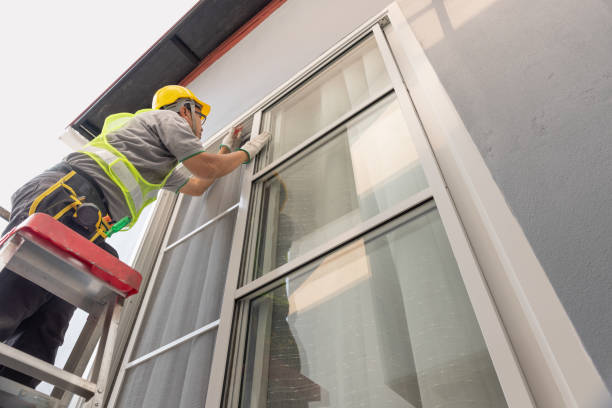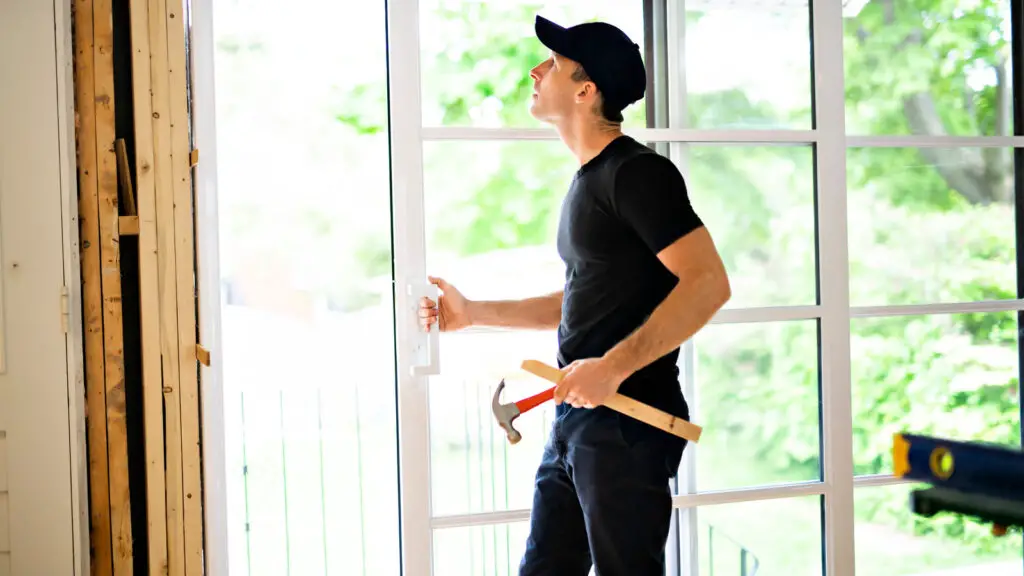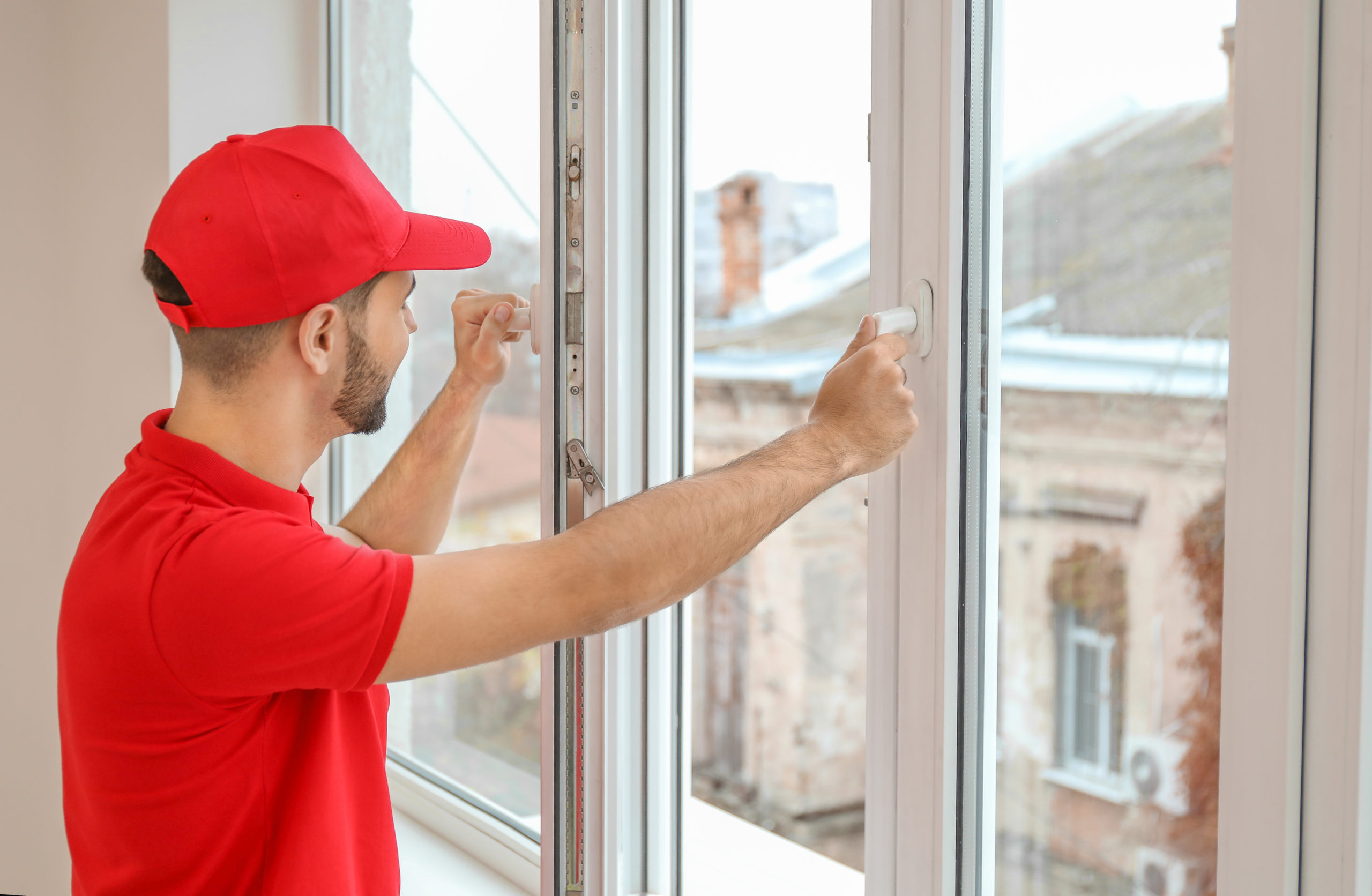It’s a common issue that many homeowners face – a stuck sliding window that refuses to budge. Whether it’s due to dirt and grime build-up, wear and tear, or simply a change in temperature causing materials to expand or contract, it can be frustrating and inconvenient.
However, there’s no need to panic or call for professional help just yet. In this guide, we will walk you through some simple steps on how to open a stuck sliding window, potentially saving you time and money.
A stuck sliding window can indeed be quite a nuisance, obstructing both the flow of fresh air and the comforting views of the outdoors.
The culprit could be as simple as a dirt build-up in the tracks or as complex as a misalignment due to wear and tear. Environmental factors, such as humidity or freezing temperature, might also cause the materials to contract or expand, leading to a stubbornly jammed window.
It’s a common predicament that can strike at the most inconvenient of times, but with a little patience and the right approach, it is a problem that you can solve yourself.
Identify the Problem
There are several possible reasons why your sliding window might be stuck. The most common is the accumulation of dirt and grime in the window tracks. Over time, dust particles, dead insects, and other small debris can settle in the tracks and harden, causing the window to stick.
Another possible reason could be excess paint. If your windows were painted shut either intentionally or accidentally, the paint could be making it difficult for the window to slide.
This is especially common in older homes where multiple layers of paint have been applied over the years.
A third reason could be a warped frame. Window frames can warp due to exposure to varying weather conditions. Extreme heat can cause the material to expand, while extreme cold can make it contract. Over time, this constant expansion and contraction can lead to warping, making it hard for the window to move.
In some cases, the problem may also be due to a faulty window installation or a mechanical issue with the window itself. Regardless of the reason, identifying the underlying problem is the first step in finding a solution to unstick your sliding window.
Safety First
Before you begin the process of unsticking your sliding window, it’s important to prioritize safety.
Always wear protective gloves to shield your hands from potential injury caused by sharp edges or broken glass.
Wear safety goggles to protect your eyes from dust, debris, or splintering material that might get dislodged during the process. If you’re required to use chemicals or solvents to dissolve hardened paint or grime, ensure the room is well-ventilated to prevent inhalation of toxic fumes.
Lastly, if you’re working on a high window, use a stable ladder and have someone assist you to avoid falls or mishaps. Remember, your safety should always come first, even in seemingly simple tasks like opening a stuck window.
Tools Required
To properly open a stuck sliding window, you need to arm yourself with the right tools. Here’s a list of the tools you’re likely going to need:
- Pry Bar: This is useful for gently lifting and adjusting the window, should it be stuck due to a warped frame or other physical barriers.
- Lubricant: A silicone-based lubricant can help to ease the friction between the window and its frame. WD-40 is a commonly used option.
- Utility Knife: This will be handy for cutting through layers of paint or grime that might be causing the window to stick.
- Plastic Scraper or Putty Knife: You’ll need this to scrape off old paint or residue without damaging the window frame.
- Cleaning Solution and Cloth: These are for cleaning the window track and frame, removing dirt and debris that could be causing the window to stick.
- Sandpaper (optional): In cases where the frame is slightly warped or swollen, sanding it down could help make the window slide smoothly again.
Cleaning the Track

Before attempting to repair or adjust a stuck sliding window, it’s crucial to first clean the track. Accumulated dirt, grime, and debris can often be the reason a window gets stuck in the first place. Follow these steps for a thorough cleaning:
- Remove Loose Debris: Begin by using a small brush (an old toothbrush works great) to dislodge any loose dirt or debris from the window track. Wipe away the dislodged particles with a dry cloth.
- Apply Cleaning Solution: Fill a spray bottle with a mixture of warm water and mild dish soap. Spray this solution generously along the window track. Let it sit for a few minutes to break down the stubborn grime.
- Scrub the Track: Use your brush again to scrub along the track. The soapy water should help to loosen the grime, making it easier to scrub away.
- Wipe Clean: Once you’ve loosened and dislodged the grime, wipe the track clean with a wet cloth. Make sure to remove all soap residue.
- Dry the Track: Thoroughly dry the window track to prevent moisture damage. You can use a dry cloth or a hairdryer for this purpose.
- Inspect the Track: Once the track is clean and dry, inspect it carefully. Check for any remaining dirt or grime, and any damage to the track or window frame.
Checking the Rollers

Inspecting and, if necessary, repairing or replacing the rollers of your sliding window is the next vital step in resolving the issue. Follow the steps below:
Accessing the Rollers:
Most sliding windows will have a pair of rollers at the bottom for smooth movement. To access these, you’ll need to lift the window sash slightly and pull it toward you at the bottom to remove it from the frame. Be careful not to apply too much force and break the glass.
Inspect the Rollers:
Look for signs of wear, damage, or rust on the rollers. If the rollers are stuck, it may be due to rust or dirt accumulation.
Clean or Replace the Rollers:
If the rollers are just dirty, clean them using a small brush and some soapy water, then wipe them dry. However, if they’re rusty or damaged, they’ll need to be replaced. Most home improvement stores sell replacement rollers. Make sure to take one of your old rollers with you to ensure you get the right size.
Reinstall the Window:
Once the rollers are clean or new, you can reinstall the window. Slide the top of the sash into the frame first, then gently lower the bottom of the sash onto the track.
Addressing Paint and Debris
Sometimes, the sliding window might be stuck due to paint buildup or debris causing friction. Here’s how to address this:
Identify Problem Areas:
Examine the window frame and track to pinpoint areas where paint blobs or debris might be causing the window to stick. These may include the corners of the frame or track where dust and grime often accumulate.
Use a Plastic Scraper:
To remove excess paint or stuck debris, use a plastic scraper or a putty knife. Be careful not to use metal tools as they can scratch the glass or damage the window frame.
Apply a Solvent:
If the paint is too tough to remove, apply a small amount of paint solvent to the affected area. Let it sit for a few minutes, then gently scrape off the loosened paint. Remember to use gloves and ventilate the area when using solvents.
Clean the Area:
After scraping off the paint or debris, clean the area with a mild cleaning solution and a soft cloth. This will help to remove any remaining residue.
Apply Lubricant:
Once the area is clean and dry, apply a silicone-based lubricant to the track and the window frame. This will help your window slide smoothly and prevent future sticking.
Lubricating the Track
When lubricating the track of your sliding window, the process should be thorough yet careful. Start by applying a silicone-based lubricant lightly across the entire length of the track. Use a small, clean paintbrush to spread the lubricant evenly.
Make sure to cover both the inner and outer tracks, and don’t forget about the vertical tracks on either side of the window sash. This might seem like overkill, but it ensures all moving parts of the window are covered.
The purpose of the lubricant is to reduce friction between the window and the tracks, making it easier for the window to slide. It also forms a protective barrier that can repel dust and grime, preventing future buildup that could cause the window to stick again.
After applying the lubricant, open and close the window a few times to distribute the lubricant evenly. In the end, the window should slide open and close easily, with minimal effort.
Note: It’s important to avoid using petroleum-based lubricants as they can attract dust and debris, leading to further issues down the line. Silicone-based lubricants are preferable as they repel dirt and are less likely to dry out or become sticky over time.
Related Topics:
Final Inspection and Test

Once you have lubricated the window tracks, it’s time to perform a final inspection and test the window for smooth operation. Start by visually inspecting the tracks to ensure that the lubricant is evenly distributed.
The tracks should have a thin, even layer of lubricant, with no excess pooling or dry spots.
Next, test the window’s operation by sliding it open and closed several times. Pay careful attention to how the window moves. It should slide smoothly and easily, with no sticking or juddering.
Listen as well, as any scraping or grinding noises could indicate that there are still areas of friction that need to be addressed.
If the window still seems to be sticking, you may need to apply additional lubricant to the tracks or consider other reasons for the sticking, such as a misaligned window track or hardware issues. Repeat the cleaning and lubrication process if necessary until the window operates smoothly.
Remember, a well-maintained sliding window not only operates efficiently, increasing the comfort and convenience of your home, but it also extends the lifespan of the window, saving you potential repair or replacement costs down the line.
Note: Always handle windows with care during testing to prevent any damage.
Conclusion
In conclusion, a stuck sliding window is a common issue that can be caused by a variety of factors, from dirt accumulation to a warped frame. However, with careful inspection, regular cleaning, and proper lubrication, it is a problem that can be effectively addressed without the need for professional assistance.
Safety and patience are key in this process, as well as having the right tools and materials on hand. A well-maintained sliding window not only ensures a smooth operation but also enhances your home’s comfort and prevents unnecessary repair costs.
Thus, knowing how to open a stuck sliding window is a valuable skill for any homeowner. Remember, prevention is always better than cure; regular maintenance is the best way to keep your sliding windows in optimal condition.
FAQs
What can I use as a lubricant for the window tracks?
You can use a silicone-based lubricant, which won’t attract dirt or dust particles. Alternatively, you can use paraffin wax or a candle to rub along the tracks. It’s a great option as it doesn’t leave any messy residue.
What should I do if my sliding window is still stuck after cleaning and lubricating?
If your window is still stuck after thorough cleaning and lubricating, you might be dealing with a hardware issue or a misaligned track. At this point, you may need to consult with a professional or consider replacing the window.

1 thought on “How To Open A Stuck Sliding Window: Safely!”